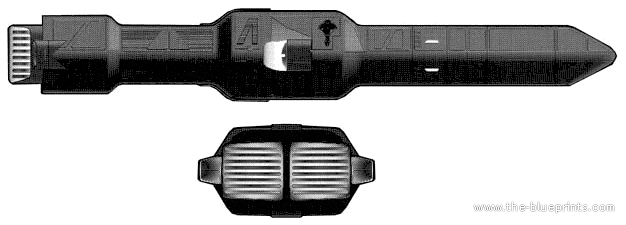Via Dolorosa
Amans In Tenebris

Intent: To create a missile for TDI
Development Thread: If Necessary
Manufacturer: Taobh Dorcha Industries
Model: V-44 Marbhadh
Affiliation: TDI / Open Market
Modularity: No
Production: Mass-Produced
Material:
A. Durasteel
B. Dallorian Alloy
Classification: Guidance Missile (Air-to-Surface *Atmosphere only*)
Size: Ship-Mounted (Starfighters ONLY)
Length: 2 meters
Weight: 500 kg.
Ammunition Type: Plasma
Ammunition Capacity: 1
Effective Range: 1,600 km. / 483 kph.
Rate of Fire: Single action
Special Features:
Description:
TDI decided to expand on their knowledge of weapon productions, moving from simple blasters and hand-held weapons to ship-mounted missiles. The first missile prototype was the V-44 Marbhadh, that came with both an infrared homing guidance system and a passive radar system; and had a plasma warhead. A pilot had the option of switching to any of the systems before firing. Before mass production could be approved, the weapon was put through a series of tests.
From the conclusion of the tests, the engineers were able to determine it's functions, limitations, strengths, and weaknesses. Functionally it could only be used as an air-to-surface missile, meaning that it had to be ship mounted. The range of the missile was extremely high compared to most, if not all, missiles employed in the galaxy. However, once it reached it's 1,600 km mark it slowed down considerably and at times would stray left or to the right; missing it's intended target completely.
The infrared homing system was praised both for it's strength and weakness. As long as the target was 'hot' the missile could strike with pin-pointe accuracy. However, if the target was 'cold' the accuracy depended on both the speed of the ship and the trajectory from which it was fired; thus it was highly recommended that the missile only be used on 'hot' targets.
The passive radar system, like the infrared system, had it's strength and weak pointes. When fired using the passive radar feature, it could track targets that were using communication signals or broadcast channels. If the signal or channel was either turned off or changed to a different frequency, the missile would literally fly bind and either hit the nearest target or miss all together.
The warhead contained high concentrations of plasma which was deadly to organic life, and could result in death and burns if caught in the blast radius (which is only 3 meters from the pointe of impact). If it came in contact with compound materials, it would evaporate or melt the materials; essentially weakening the target it hit. Due to the guidance system installed linking the missile to the starfighter, the missiles cannot be fired from orbit. Any attempts to do so, the guidance system has a built in kill switch to prevent the event from happening. Due to the nature of the warhead's capabilities, any gunships, bombers, or fighters using these missiles could only use half of what the standard number found on most. With that being said, no more than two of these missiles could be attached.
At the conclusion of all the testing, the V-44 Marbhadh began rolling off the assembly line in TDI factories.
Primary Source: N/A


